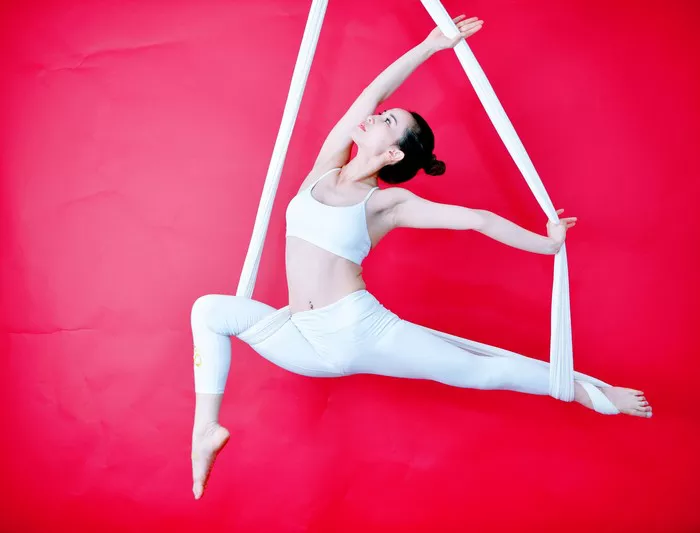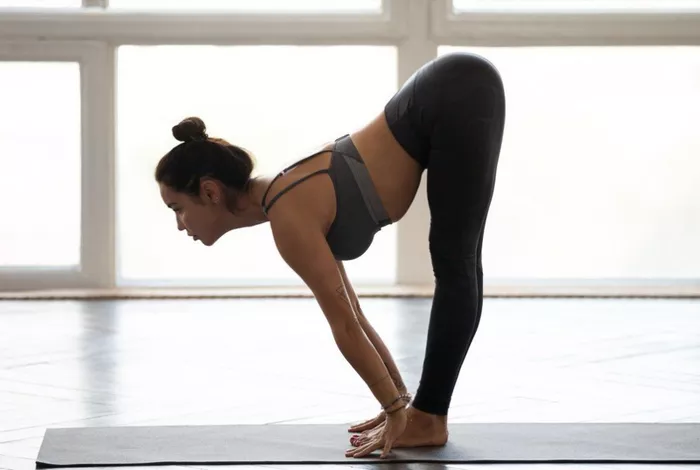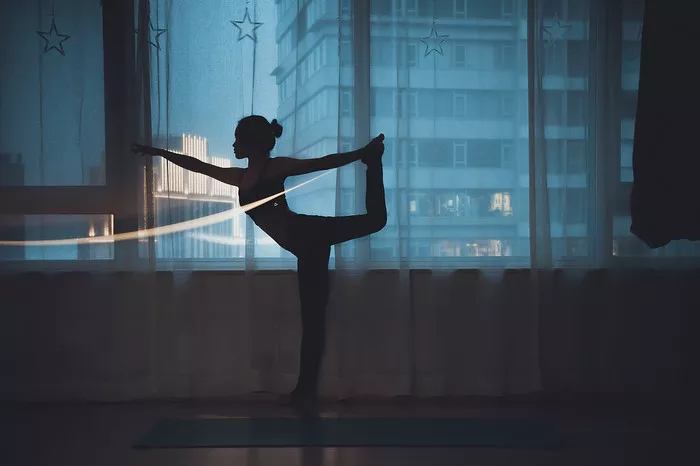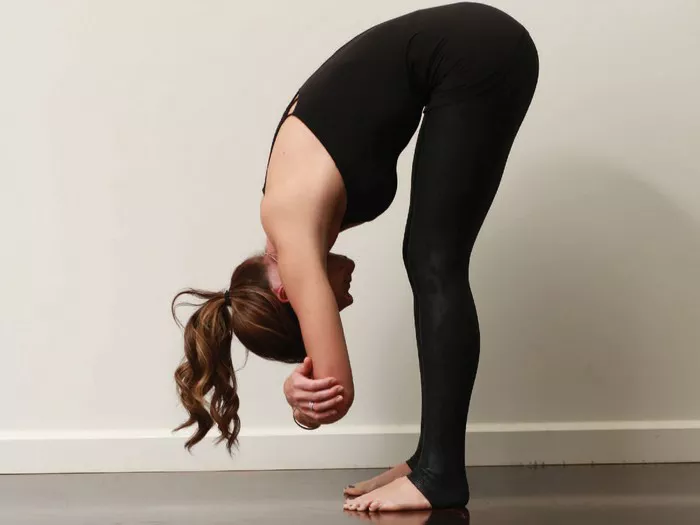Yoga has long been celebrated for its myriad of physical and mental health benefits, offering practitioners a path to strength, flexibility, and inner peace. As the practice continues to evolve, aerial yoga has emerged as a unique and dynamic variation, combining traditional yoga poses with elements of aerial arts. Suspended from hammocks or silk fabrics, practitioners engage in a series of poses and sequences, experiencing a full-body workout unlike any other. In this article, we delve into the numerous benefits of aerial yoga, from improved flexibility and strength to enhanced mental well-being.
1. Enhanced Flexibility
One of the most apparent benefits of aerial yoga is its ability to enhance flexibility. The use of hammocks or silk fabrics allows practitioners to deepen their stretches and achieve poses that may be challenging on the ground. By leveraging gravity and the support of the aerial apparatus, individuals can safely explore their range of motion, gradually increasing flexibility over time. As they become more comfortable with the practice, students often find that they can access deeper stretches and maintain them for longer durations, leading to increased suppleness in the muscles and joints.
2. Increased Strength
In addition to flexibility, aerial yoga also offers significant strength-building benefits. Many poses require participants to engage their core muscles to stabilize themselves in the air, leading to improved abdominal strength and overall core stability. Furthermore, the practice involves using upper body strength to support the body weight while suspended, which can lead to greater muscle tone in the arms, shoulders, and back. Over time, consistent practice can result in increased muscular endurance and overall strength, empowering individuals to tackle more advanced poses with ease.
3. Spinal Decompression
Aerial yoga provides a unique opportunity for spinal decompression, which can be particularly beneficial for individuals who suffer from back pain or spinal misalignment. The gentle traction created by hanging in the hammock allows the spine to lengthen and decompress, relieving pressure on the vertebrae and promoting spinal health. As students move through different poses and inversions, they may experience a sense of elongation in the spine, alleviating tension and promoting better alignment. Regular practice can help mitigate back discomfort and improve overall spinal mobility.
4. Stress Reduction and Relaxation
Like traditional yoga, aerial yoga offers numerous mental health benefits, including stress reduction and relaxation. The rhythmic breathing techniques employed during practice help to calm the mind and promote mindfulness, allowing practitioners to cultivate a sense of presence and inner peace. The gentle swaying motions induced by the hammock create a soothing sensation, further enhancing the relaxation response. As individuals focus on their breath and movement, they can release tension held in the body and quiet the chatter of the mind, resulting in a profound sense of relaxation and rejuvenation.
5. Improved Balance and Coordination
Balancing in the air requires a heightened sense of body awareness and proprioception, making aerial yoga an excellent practice for improving balance and coordination. As students learn to stabilize themselves in various aerial poses, they develop greater proprioceptive awareness, enhancing their ability to control and coordinate their movements. Over time, this improved balance translates to better stability in everyday activities and reduces the risk of falls and injuries. Additionally, the dynamic nature of aerial yoga challenges individuals to adapt to changing conditions, further honing their coordination skills.
6. Boosted Mood and Creativity
Engaging in aerial yoga can have a profound impact on mood and creativity, thanks to its invigorating and playful nature. The sensation of flying and the freedom of movement offered by the hammock can evoke feelings of joy and exhilaration, lifting spirits and boosting overall mood. Moreover, the creative exploration of movement in the air encourages self-expression and fosters a sense of creativity and imagination. As practitioners experiment with different poses and transitions, they tap into their innate creativity, cultivating a sense of childlike wonder and curiosity.
7. Community and Connection
Aerial yoga often fosters a sense of community and connection among practitioners, as they come together to share in the experience of exploration and growth. Group classes provide an opportunity for individuals to connect with like-minded peers, forming bonds based on a shared passion for movement and self-discovery. The supportive atmosphere of the aerial yoga community encourages individuals to challenge themselves, celebrate their achievements, and support one another along their journey. This sense of camaraderie can enhance motivation and accountability, inspiring practitioners to maintain a regular practice and continue progressing in their aerial yoga journey.
8. Accessible to All Levels
Despite its seemingly acrobatic nature, aerial yoga is accessible to practitioners of all levels, including beginners. Most classes offer modifications and variations to accommodate different skill levels and physical abilities, allowing individuals to progress at their own pace. The supportive nature of the aerial hammock also provides a safety net for students as they explore new poses and transitions, reducing the risk of injury. Whether you’re a seasoned yogi or a newcomer to the practice, aerial yoga offers a welcoming environment for all to experience the transformative benefits of yoga in the air.
Conclusion
In conclusion, aerial yoga offers a wide range of benefits for both the body and mind, making it a valuable addition to any wellness routine. From enhanced flexibility and strength to stress reduction and creativity, the practice provides a holistic approach to health and well-being. Whether you’re seeking to deepen your yoga practice, alleviate back pain, or simply experience the joy of movement in the air, aerial yoga offers something for everyone. So why not elevate your practice and explore the transformative power of aerial yoga today?
FAQs:
Is aerial yoga good for your skin?
Aerial yoga can indirectly benefit your skin by improving blood circulation and reducing stress, which may promote a healthier complexion. However, direct effects on skin health are minimal compared to other factors like hydration and skincare routines.
Is aerial yoga better than pilates?
Both aerial yoga and Pilates offer unique benefits. Aerial yoga focuses on suspension and inversion, enhancing flexibility and decompressing the spine. Pilates emphasizes core strength, flexibility, and overall body alignment. The choice between them depends on individual preferences and fitness goals.
Is aerial yoga hard for beginners?
Aerial yoga can be challenging for beginners due to the unfamiliarity with aerial equipment and the need to build strength and balance. However, with consistent practice and guidance from a qualified instructor, beginners can gradually improve and enjoy the practice.
Can I do aerial yoga if I’m not flexible?
Yes, aerial yoga can be modified for individuals of all flexibility levels. The support provided by the hammock allows for gentle stretching and poses can be adapted to accommodate varying flexibility.
Do you wear shoes during aerial yoga?
No, shoes are not worn during aerial yoga as they can damage the hammock fabric and impede grip and balance. Participants typically practice barefoot or in socks with grip.





















